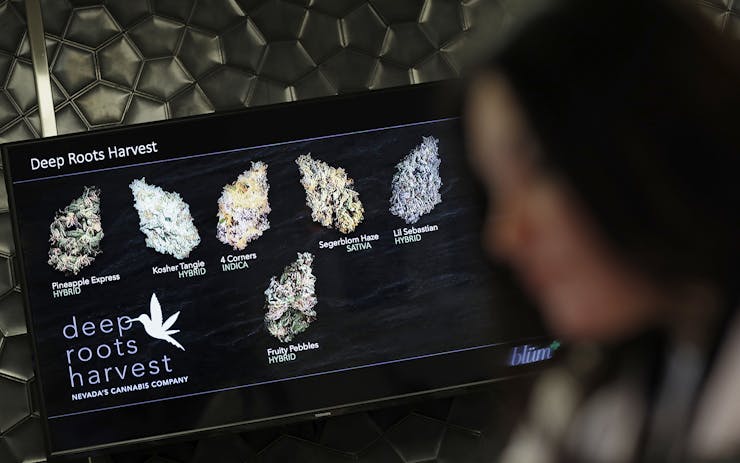From AK-47 to Zkittlez, cannabis strain names encapsulate the methodical, the ridiculous, and everything in between. Strain names, like our own names, have a story behind them. Some were passed from parents or grandparents or even great-great grandparents. Others hold temporal significance, like Sputnik or Pre-98 Bubba Kush, denoting and preserving a place in history. Other names, like Strawberry Cough or Sweet Dreams, help you anticipate the flavors or effects to come.
But where and why did so many names for cannabis arise? And now, in the midst of a cannabis revolution, how will an expanding market make room for such a massive amount of strain diversity?
Early Cannabis Naming
Modern cannabis names primarily began in the 1960s and ’70s when cannabis breeders began transporting feral strains from around the world – called “landrace strains” – and transplanting them locally. Acapulco Gold, Durban Poison, Panama Red, Colombian Gold, and Afghan Kush are just a few examples of landrace genetics that laid the foundation and became the essential building blocks of the genetic diversity we see today.
These landraces – many of which inherited a name based on their geographical origin – were then bred together to develop a wider range of genetic crosses. The motivations for this interbreeding stemmed from a desire for new effects, flavors, natural disease and pest resistance, larger yields, curiosity, or simply by accident.
Today, thousands of named crossbred hybrids have been created. While many of these genetics die out over time, they’re constantly being replaced by new hybrid creations that span the spectrum between sativa and indica.
How Do Cannabis Breeders Name Their Strain?
Every cannabis breeder has a different method for naming their unique genetic creation. They often create a name by cleverly combining the parent strains’ names. For example:
- Poison OG x GSC (f.k.a Girl Scout Cookies) = Suicide Girl
- Blueberry x White Widow = Berry White
- Mad Scientist x Timewreck = Dr. Who
Other times a strain’s name is representative of its effects, like Blue Dream, which combines Blueberry and Haze to create an uplifted, “dreamy” mental state.
A name may also speak to the other attributes of the strain. For example, White Widow, Granddaddy Purple, and Key Lime Pie all speak to physical traits like an abundance of white trichomes, colorful purple leaves, or a powerful fruity, doughy aroma.
In other instances, a strain’s name represents a homage, like Jack Herer or Ringo’s Gift, named for a cannabis activist and a CBD-strain breeder, respectively.
We spoke to Subcool and MzJill of TGA Seeds to get a firsthand look at a breeder’s naming process, and when we asked which of their strains has the best story behind it, they mentioned their Agent Orange hybrid.
“Agent Orange was named as a tribute strain to Jill’s father who fought in Vietnam and ended up passing away from cancer due to the defoliant Agent Orange,” Subcool told Leafly. “Many distributors do not understand that this strain is a tribute, not a joke.”
Though strains can carry powerful or sensitive messages, the nomenclature of strains can also be totally random. Squiblica, Zombie OG, and SleeStack are just a few random additions that probably held significance to the breeder, but hold little to no topical relevance to the consumer.
You may also find strains that bear the names of pop culture icons or celebrities. They may be satirical (e.g. Charlie Sheen, Bob Saget), honorary (e.g. Michael Phelps OG, Gupta Kush), or for marketability (e.g. Khalifa Kush, Margaret Cho-G).
But with so many different strains flooding the market, many are starting to wonder how the practice of naming will evolve with time.
The Future of Cannabis Strain Names
It’s not hard to believe that the number of genetic crosses will increase as more states legalize cannabis. This begs the questions of how a grower producing, let’s say, OG Kush in Washington will delineate his or her phenotype from growers producing their own variety of OG Kush in California or Massachusetts, especially if the name is all that laymen consumers have to go on.
In states with legal adult-use cannabis, we already see growers distinguishing their product not just with a strain name, but with a brand. Because two of the same strains can vary in quality by a great degree depending on grow method and expertise, more and more we’re seeing a producer’s name as an attachment to the strain’s (e.g. Artizen Blue Dream vs. Emerald Jane’s Blue Dream).
But what about the strain names themselves? What turning point might the industry take in how we use ubiquitous names like Blue Dream, Sour Diesel, Granddaddy Purple, and the thousands of others?
“Genetic mapping could change everything,” Subcool pointed out. “Science allows us to map a strain from a seed’s genetic material, so many seed companies are about to have their work seriously scrutinized. I don’t see any huge changes happening, but so many people breed with our core genetics [that] it will be fun to see how many cultivars are just duplicates or F2’s of already proven genetics.”
In other words, if a strain is defined by its genetics, how many strains are simply given a different name for marketability? And how many are renamed copies of other breeder’s proprietary genetics? This is a problem for the industry to consider as research and technology develops.
There are no hard and fast guidelines for naming strains. But cannabis consumers, producers, and purveyors all know that cannabis tells a story one way or another. Strain names that elucidate that story; whether it’s about the potential effects, the country of origin, the combined genetic background, or the producer’s robust sense of humor, a strain name is meaningful, even if that meaning is obscured.
Consider this the next time you pack a bowl of Pineapple Dog Shit or White Nightmare, and think to yourself, is it the name that makes the cannabis or the cannabis that makes the name? The likelihood is that both are true, but the meaning is all yours.






